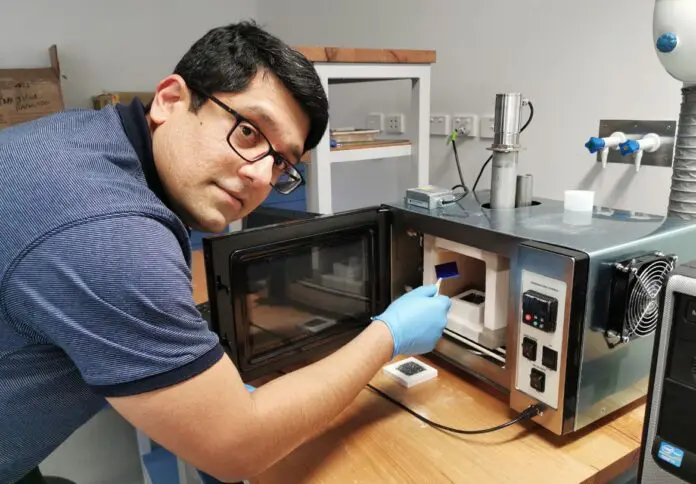A team of Australian engineers have developed a new microwave technology that could enhance solar panel production, making them easier to recycle.
The proposed microwave treatment pioneered by Macquarie University in Sydney softens the plastic coating that protects the silicon plate from moisture and contamination. This way, the material can be peeled off mechanically.
Project lead Dr Binesh Puthen Veettil explains the innovative method means the plate can be delaminated and its components reused without using harsh chemicals. ‘So there is less contamination. And the whole process can all be undertaken at room temperature,’ Dr Veettil adds.
Rarely utilised solution
The majority of decommissioned solar panels end up in landfill, he laments. ‘In the rare instances when they are recycled, you crush the panels, heat them to about 1400°C and wash them with chemicals to remove the plastic — a highly energy-demanding process.’
A more sustainable and efficient alternative for this growing waste stream is more than welcome. Veettil argues that the microwave annealing of semiconductor devices has not been extensively researched and is rarely utilised in industry. ‘Yet it has the potential to significantly reduce the time and cost associated with large-volume semiconductor processing.’
His team concludes that the new technology notably reduces production defects, light-induced degradation while providing a way to revive the material at end-of-life stage.
Big impact
The Australian Renewable Energy Agency has recently awarded three individual solar panel-related R&D projects in development at Macquarie University around AUS$ 2.5 million (EUR 1.5 million) in funding, including Veettil’s work. The government’s total backing represents AUS$ 15 million, being divided amongst 16 similar projects across the country.
The full work of the Macquarie University team has been published in the journal Applied Physics Letters. In the paper, the researchers estimate that the silicon photovoltaics industry is currently the biggest consumer of electronic grade silicon, with the projected growth to 4500 GW by 2050. Returning the material to the loop would be a huge step forward for both producers and the environment.
Don't hesitate to contact us to share your input and ideas. Subscribe to the magazine or (free) newsletter.



